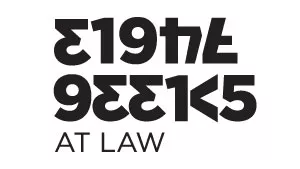- within Intellectual Property topic(s)
- in United States
- in United States
- within Corporate/Commercial Law topic(s)
INTRODUCTION
The rapid advancement of artificial intelligence (AI) has triggered significant legal and ethical debates, particularly in intellectual property law. One of the most contentious issues is whether AI systems can legally use copyrighted material to train their models and whether this can be considered "fair use".
The case of Thomson Reuters Enterprise Centre GmbH and West Publishing Corp. v. ROSS Intelligence Inc. serves as a key example of the legal challenges surrounding AI training and copyright infringement.
BACKGROUND OF THE CASE
The dispute revolves around allegations of copyright infringement and tortious interference with a contract, however, this analysis will focus primarily on the copyright claim.
The Parties Involved:
- Thomson Reuters & West Publishing Corp. (Plaintiffs): The owners of Westlaw, a leading legal research platform providing curated, searchable legal databases.
- ROSS Intelligence (Defendant): An AI-driven legal research tool enabling natural language queries.
- LegalEase Solutions: A third-party legal research company contracted by ROSS to assist in training its AI model. The company had a limited license to use Westlaw.
THE ALLEGATIONS:
Thomson Reuters alleged that ROSS used Westlaw's proprietary data to train its AI model without authorisation.
Specifically:
- Westlaw's Key Number System – which is used to organise and arrange judicial opinions; and
- Westlaw's headnotes – which are short summaries of the law
(the Westlaw Data).
The claim arose when the Plaintiffs observed a significant 4,000% increase in LegalEase's Westlaw usage, suggesting large-scale data scraping, in violation of LegalEase's service agreement.
(Thomson Reuters sued LegalEase separately for breach of contract)
THE COPYRIGHT INFRINGEMENT CLAIM
Copyright protects expressions of original creative works and gives copyright holders the right to control the use and distribution of their work.
Fair use is a legal defence used in copyright infringement cases.
What is fair use?
Fair use is a legal doctrine in copyright law that allows limited use of copyrighted material without the owner's permission under certain circumstances. It serves as a defence against copyright infringement claims and is intended to balance the rights of copyright holders with the public interest in free expression, education, and innovation.
It is the argument that even though copyrighted material has been used without permission, it was in the public's interest to do so.
Unsurprisingly, fair use has been raised in several cases involving AI copyright infringement.
(In Authors Guild v. Google, Inc., the court accepted the defence and stated that Google's use of the books, that were digitised without consent, to create snippets for searches was transformative and that it did not harm the market for the original books.)
ROSS's Argument:
ROSS contended that the Westlaw Data consisted of legal texts and judicial opinions. As these are public government documents, Thomson Reuters could not claim copyright in them or claim that similar text derived from this uncopyrightable source breached its copyright.
Further, ROSS argued that even though Westlaw's Key Number System was capable of attracting copyright protection as a compilation (i.e., the method of organising and arranging the information), it would need to be determined whether the system was original enough and whether ROSS's use of it in its AI platform amounted to illegal copying.
ROSS also put up a fair use defence, suggesting that it had only used a small amount of Westlaw Data compared to what was available on the entire database. The data had been converted into numerical data for training and did not appear in the final product for consumers. As such, the use was transformative and inured to the public benefit of allowing people to access the law.
Thomson Reuters's Argument:
Thomson Reuters maintained that its Westlaw Data was the product of a rigorous editorial process undertaken by its attorney-editors. The data was organised, annotated, and classified through substantial creative effort, time, and financial investment. This made it an original creative work which had copyright protection.
The Plaintiffs countered ROSS's fair use defence saying that ROSS had built a competing legal research tool so their use of the Westlaw material was not transformative. Additionally, ROSS stood to profit from exploiting the copyrighted material without paying the customary price. The product they were building also deprived Thomson Reuters of a potential market (e.g. providing training data for compensation).
Establishing Fair Use
There are four (4) elements which must be present to support an argument of fair use:
- Purpose and character of the use: This focuses on why and how the copyrighted material was used. Primarily:
- whether the use was commercial (for profit) or non-profit; and
- if it is used in a substantially different or transformative way;
- Nature of the copyrighted work: This examines the type of work that was used and how creative or original it was;
- Amount and substantiality of the portion used: This measures how much copyrighted work was used and how important that portion was in relation to the copyrighted work as a whole; and
- Effect of the use on potential market: This considers whether the use harmed the copyright holder's ability to profit from their work.
In the present case, the court decided that the two most important factors were:
- the purpose and character of the use; and
- the effect of the use on potential market.
which were held in favour of Thomson Reuters.
ROSS's product was commercial and was not transformative enough. It would compete with Westlaw's market share, and ultimately, ROSS could have created the product without infringing on Thomson Reuters's copyright.
The Court's Ruling:
Both parties filed for summary judgment on:
- Thomson Reuters's copyright infringement claim; and
- ROSS's fair use defence.
Initially, the judge largely denied the motions for summary judgment, holding that there were triable issues of fact that needed to be decided by a jury.
However, on 11 February 2025, the court revised this ruling and:
- granted partial summary judgment for Thomson Reuters's copyright infringement claim;
- granted partial summary judgment for Thomson Reuters on fair use;
- denied ROSS's motion for summary judgment on fair use; and
- denied ROSS's motion for summary judgment on Thomson Reuters's copyright claims.
Partial summary judgment for Thomson Reuters's copyright infringement claim:
Thomson Reuters moved for summary judgment on the copyright infringement of the Westlaw headnotes.
For a copyright infringement claim to succeed, three elements must be established:
- ownership of a valid copyright;
- actual copying; and
- substantial similarity.
The judge, in deciding this motion, considered whether the content ROSS used from LegalEase was copied from the Westlaw Data or was derived from uncopyrightable judicial opinion.
The court found that the headnotes met the minimal threshold for originality to attract copyright protection and additionally, Thomson Reuters had a copyright registration for Westlaw's content, which was prima facie evidence of the validity of their copyright.
The court also found that there had been actual copying of the headnotes since the Westlaw platform had admittedly been accessed.
As the data used to train ROSS's system resembled the headnotes more closely than they resembled the judicial opinions, the court found them to be substantially similar.
Thus, the partial summary judgment was granted for Thomson Reuters on the basis that ROSS had indeed infringed.
Partial summary judgment for Thomson Reuters on fair use and ROSS's denied motion for summary judgment on fair use:
The court determined that ROSS's use was commercial and not transformative. ROSS used the Westlaw Data to create a competing legal research tool and so could not rely on the defence of fair use.
Denied motion for summary judgment on Thomson Reuters's copyright claims:
ROSS moved for summary judgment on all the pieces that Thomson Reuters accused them of infringing which included both the headnotes, the editorials and the Key Number System.
ROSS presented a number of defences:
- innocent infringement (i.e. that they had unintentionally infringed any copyright);
- copyright misuse (i.e. Thomson Reuters was stifling healthy competition by using copyright protection in a way that was against the public interest);
- merger (i.e. the ideas were so close to the expression that they merged with the expression, making it uncopyrightable); and
- scenes à faire (i.e. both parties worked from the same source of judicial opinions and the similarities naturally occurred because they were customary and as such uncopyrightable).
The court rejected all the defences as inapplicable in this case.
Why is this Important?
This ruling sets a significant precedent for fair use as a defence in cases of copyright infringement during AI training.
As AI technologies continue to advance, the need for clear frameworks that address the unique challenges they pose has become increasingly important.
A delicate balance needs to be struck between protecting data ownership rights and preserving innovation and competition.
The Complexity of AI Regulation – Square Peg, Round Hole:
The European Union AI Act, passed in August 2024, is one of the most comprehensive AI regulatory frameworks to date. However, as implementation remains underway, legal disputes involving AI still largely rely on pre-existing laws such as data protection and copyright legislation. These laws were drafted with no contemplation of advanced AI systems, and so create certain nuances and ambiguity.
We can expect to continue seeing challenges concerning copyright infringement, data protection and ethical use in the AI space.
The content of this article is intended to provide a general guide to the subject matter. Specialist advice should be sought about your specific circumstances.



